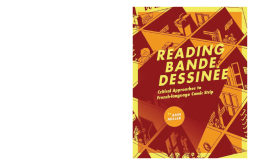
Additional Information
Book Details
Abstract
The increasing popularity of bande dessinee, or French-language comic strip, means that it is being established on university syllabuses worldwide. Reading Bande Dessinee provides a thorough introduction to the medium and in-depth critical analysis with focus on contemporary examples of the art form, historical context, key artists, and themes such as gender, autobiography and postcolonial culture. Miller's groundbreaking book demonstrates exactly why bande dessinee is considered to be a visual narrative art form and encourages the reader to appreciate and understand it to the best of their abilities. Miller also provides the terminology, framework and tools necessary for study, highly relevant to current curriculum and she creates a multi-disciplinary, comprehensive approach to the subject matter. Reading Bande Dessinee draws from analytical viewpoints such as narratology, cultural studies and gender studies to illuminate the form fully, examining how it can be seen to undermine mythologies of national and cultural identity, investigating the satirical possibilities and looking at how the comic strip may contest normative representations of the body according to gender theories. This volume explores the controversy surrounding the comic strips in contemporary French society and traces the historical and cultural implications surrounding the legitimization of bande dessinee. With the growing academic readership of bande dessinee this book proves to be an invaluable analysis for scholars of the postmodern narrative art. Reading Bande Dessinee is also an essential resource for anyone interested in the cultural context, visual and narrative meaning and intricacies of the art form.
